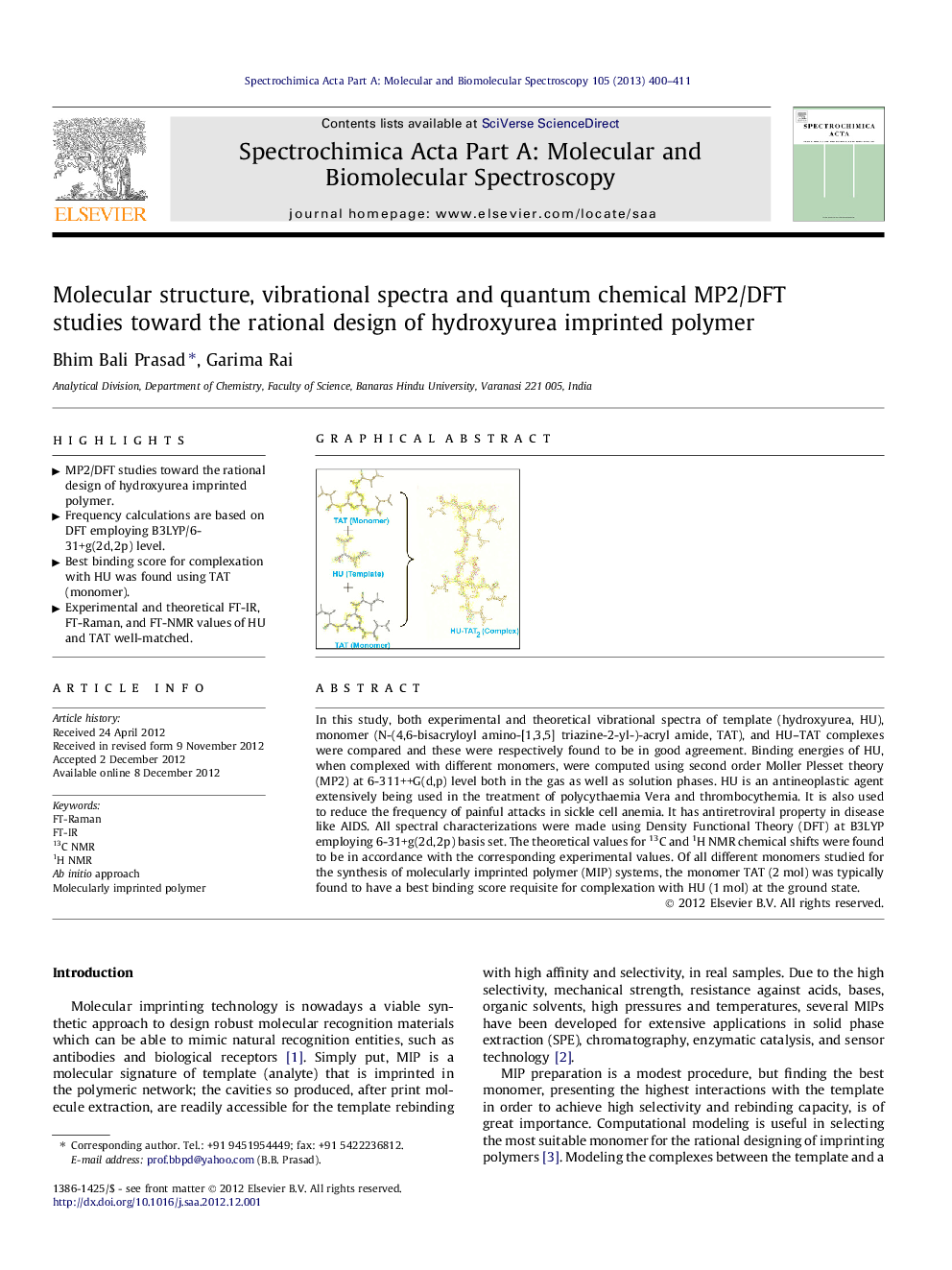| Article ID | Journal | Published Year | Pages | File Type |
|---|---|---|---|---|
| 1231859 | Spectrochimica Acta Part A: Molecular and Biomolecular Spectroscopy | 2013 | 12 Pages |
In this study, both experimental and theoretical vibrational spectra of template (hydroxyurea, HU), monomer (N-(4,6-bisacryloyl amino-[1,3,5] triazine-2-yl-)-acryl amide, TAT), and HU–TAT complexes were compared and these were respectively found to be in good agreement. Binding energies of HU, when complexed with different monomers, were computed using second order Moller Plesset theory (MP2) at 6-311++G(d,p) level both in the gas as well as solution phases. HU is an antineoplastic agent extensively being used in the treatment of polycythaemia Vera and thrombocythemia. It is also used to reduce the frequency of painful attacks in sickle cell anemia. It has antiretroviral property in disease like AIDS. All spectral characterizations were made using Density Functional Theory (DFT) at B3LYP employing 6-31+g(2d, 2p) basis set. The theoretical values for 13C and 1H NMR chemical shifts were found to be in accordance with the corresponding experimental values. Of all different monomers studied for the synthesis of molecularly imprinted polymer (MIP) systems, the monomer TAT (2 mol) was typically found to have a best binding score requisite for complexation with HU (1 mol) at the ground state.
Graphical abstractFigure optionsDownload full-size imageDownload as PowerPoint slideHighlights► MP2/DFT studies toward the rational design of hydroxyurea imprinted polymer. ► Frequency calculations are based on DFT employing B3LYP/6-31+g(2d, 2p) level. ► Best binding score for complexation with HU was found using TAT (monomer). ► Experimental and theoretical FT-IR, FT-Raman, and FT-NMR values of HU and TAT well-matched.
